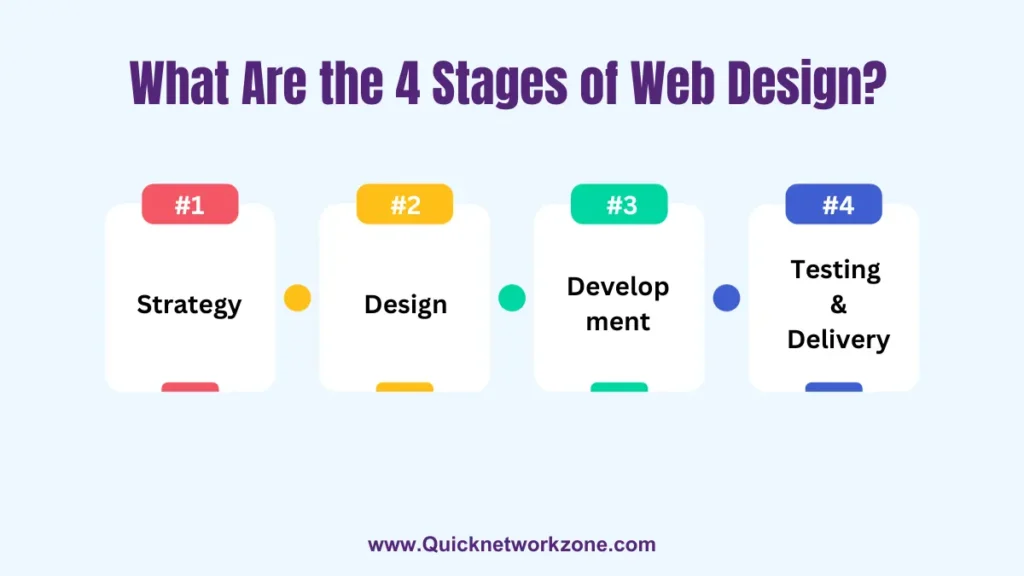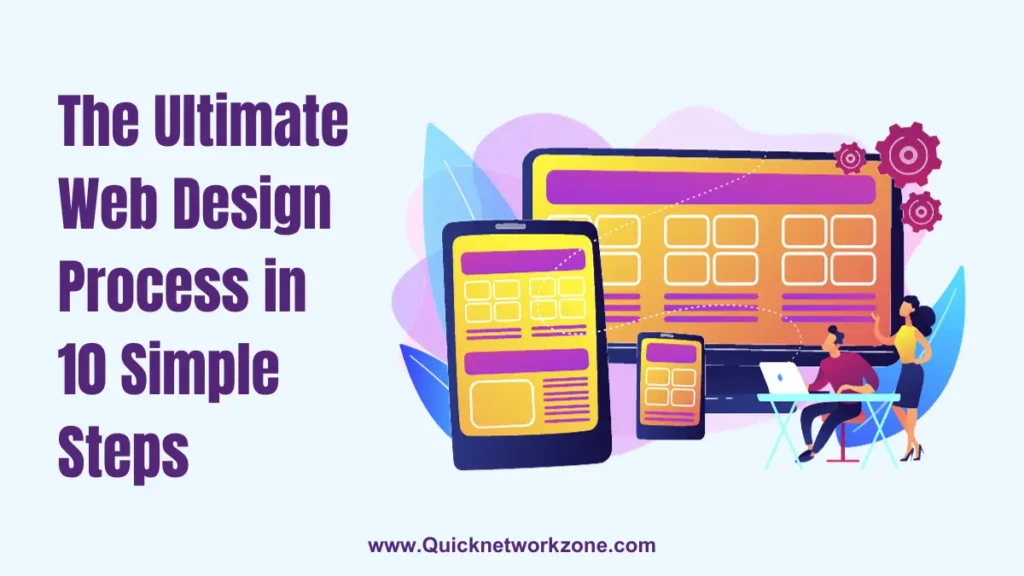Yes, web design is an excellent career path in 2024 and beyond. As digital technology continues to expand, demand for talented web designers also increases across industries. Though entry-level salaries average $45,000, experienced web designers can earn over $100,000 by specializing in fields like UX/UI design, front-end development, and digital marketing. The work provides ample creative outlets and opportunities for leadership roles. Prospective web designers will benefit greatly from hands-on training in leading software tools, programming languages, and design principles. With proper skills and a passion for technology and creativity, web design offers a fulfilling long-term career with strong growth prospects.
Key Takeaways:
- Web design offers strong job growth (23% from 2021-2031) and abundant career opportunities in a variety of industries.
- Specializing in lucrative skills like UX design, UI design, and front-end development can boost earning potential above $100K.
- Web design allows creatives to work on diverse projects and build their personal brand.
- With experience, web designers can attain roles like Creative Director or Chief Creative Officer with high salaries.
- Training programs teach technical skills and offer networking opportunities to excel in web design.
If you enjoy combining creativity and technology to build visually appealing and user-friendly digital experiences, a career in web design may be perfect for you.
As more companies and organizations expand their online presence, the demand for talented web designers continues to grow. Employment in web design is projected to increase 23% from 2021 to 2031, creating an abundance of new job opportunities in the coming decade.
Does web design offer a viable long-term career path worth pursuing? Let’s take a closer look at key factors like job outlook, earning potential, work environment, and career development prospects.
An Expanding Field With a Positive Job Outlook
The web design field has expanded rapidly over the past two decades. Today, nearly every company and organization needs an online presence to connect with tech-savvy consumers.
This increasing reliance on the web has fueled strong demand for web design professionals.
According to the U.S. Bureau of Labor Statistics (BLS), employment of web designers is projected to grow 23% from 2021 to 2031. This is much faster than the average for all occupations, which is just 7%.
The BLS reports web designer job growth in these key industries:
- Spectator sports – 58%
- Performing arts – 43%
- Non-store retailers – 35%
Entertainment, software publishing, and ecommerce sectors will also drive web designer job growth as online interaction becomes more critical across all industries.
As technology continues advancing, companies must ensure their digital experiences engage users across platforms like desktop, smartphones, tablets, smart watches, and more.
With new technologies and trends constantly emerging, demand for creative and tech-savvy web designers shows no signs of slowing down.
🙂 The positive employment outlook creates abundant opportunities for aspiring web designers to launch and grow rewarding careers in this fast-paced field.
Diverse Industries and Specializations
One of the most appealing aspects of web design is the diversity of industries utilizing web designers’ skills.
Virtually every company needs an engaging website, mobile app, or other digital presence. This leads to web designer roles across:
- Digital marketing and advertising agencies
- Tech startups
- Ecommerce retailers
- News, media, and publishing
- Non-profit organizations
- Government agencies
- Healthcare
- Finance and insurance
- Hospitality and tourism
- Education
- And more!
Within web design, professionals can specialize in high-demand skills:
- User experience (UX) design – Focused on optimizing apps and sites for maximum usability and customer satisfaction.
- User interface (UI) design – Concentrates on look, feel, and interactivity of screens and pages.
- Front-end development – Programs web and app functionality and components using languages like HTML, CSS, and JavaScript.
- Web content creation – Writes compelling copy, blog posts, and other content.
- Search engine optimization – Optimizes sites to rank higher in search engines like Google.
- Web analytics – Analyzes site traffic and user behavior data to guide design and marketing decisions.
Specializing allows web designers to boost earning potential and carve out niches aligned with personal interests and strengths. Large agencies and companies have roles dedicated exclusively to specialties like UX and UI design.
At smaller firms, web designers often become multidisciplinary generalists performing a range of tasks. This provides exposure to diverse skills before specializing later in one’s career.
Lucrative Earning Potential
Strong demand for web design skills translates into lucrative salaries, especially for specialists.
According to PayScale, average pay for web designers is $68,638 per year:
- Entry-level (0-2 years experience): ~$52k
- Mid-career (5-10 years): ~$73k
- Experienced (10-20 years): ~$86k
For high-demand specialties like UX design and UI design, PayScale reports averages above $100k:
- Entry-level UX designer: ~$77k
- Mid-career UX designer: ~$108k
- Entry-level UI designer: ~$76k
- Mid-career UI designer: ~$111k
Location also impacts salaries, with web designers in major tech hubs like Silicon Valley and New York City earning 20-30% more than the national average.
According to ZipRecruiter, the top 10% of web designers earn $124k or more annually.
Further along in their careers, web designers can attain senior and leadership positions with salaries up to $180k:
- Creative Director – $125k average
- Art Director – $114k average
- Chief Creative Officer – $180k average
The earning potential for web designers compares very favorably to the national median salary of around $46k.
For professionals eager to monetize their creative skills, web design offers financially and professionally rewarding long-term career paths.
Rewarding Creative Opportunities
Web designers get to flex their creative muscles every day.
Bringing mockups and wireframes to visually appealing, pixel-perfect life requires strong command of design fundamentals like color theory, typography, layout, composition, and more.
But web design involves much more than just making sites and apps look good.
Great web designers focus on crafting cohesive user experiences that align with client goals and user needs. This demands creativity, empathy, and problem-solving skills in equal measure.
As they gain experience, talented web designers may take on creative leadership positions like:
- Creative Director – Guides the visual style and overall creative vision of digital projects and campaigns. They manage teams of designers and oversee key deliverables.
- Art Director – Conceives designs and directs creation of graphics, images, layouts, and other visual elements. Art directors collaborate closely with copywriters.
- Chief Creative Officer – As the top creative executive, provides strategic leadership for the company or agency’s creative vision and output.
For many web designers, reaching these prestigious roles represents the pinnacle of career success. The positions allow leading large teams and influencing important projects.
Even early in their careers, web designers often have opportunities to work on diverse projects allowing them to expand their skills. Building a varied portfolio is key to landing that dream creative leadership role down the road.
Collaboration Creates Connections
Most web designers collaborate heavily on projects, working closely with:
- UX researchers
- UI and graphic designers
- Front-end and back-end developers
- Project managers
- Marketing specialists
- Clients
The collaborative nature of web design promotes forming connections with team members, clients, and other industry professionals.
These relationships can blossom into valuable networks leading to job referrals, collaborations, mentorships, and other career-boosting opportunities.
For web designers seeking leadership roles, displaying teamwork and relationship-building skills is essential.
Even freelancers regularly partner with other creatives like writers, videographers, and photographers for client projects.
Strong interpersonal abilities and communication skills make delivering high-quality work much easier for web designers. Partnering with others who have complementary skills prevents web designers from getting siloed.
🙂 Working collaboratively and forming professional connections are often highlights of the job for web designers.
Choose Your Own Adventure
Web designers have options when it comes to structuring their careers:
- Agency – Join a digital marketing or design agency serving clients across industries. Agencies offer structured career ladders and exposure to diverse projects.
- In-house – Work directly on a company’s internal web design needs. In-house roles provide deep focus on a single brand.
- Freelance – Enjoy the freedom and flexibility of freelancing. Freelancers can choose their own clients and set their own hours.
- Consulting – Work on a project basis helping companies improve their web presence and online capabilities.
- Self-employed – Build your own web design business serving a portfolio of clients. This path allows for creative control but also presents financial risk.
- Specialize – Become an expert in high-demand web design skills like UX, UI, front-end development, SEO, analytics, etc. Specialists command top salaries.
- Generalize – Develop well-rounded abilities spanning graphic design, coding, writing, and project management. Generalists have flexibility.
- Teach – After becoming very experienced, you may enjoy passing on your knowledge by teaching web design at schools or bootcamps.
Web designers typically try different career structures early on to discover which path best suits their talents, interests, and financial needs.
The field rewards professionals who play to their unique strengths while seizing opportunities to develop new skills needed to excel.
Formal Training Provides a Running Start
While web designers can learn informally through self-study resources, formal training provides huge advantages.
Structured web design programs teach essential technical and creative skills through a proven curriculum. Students work on real-world projects guided by experienced instructors.
Programs focused on high-demand specialties like UX/UI design help graduates hit the ground running in these lucrative fields.
FAQs About Web Design Careers
Is it hard to become a web designer?
Becoming a professional web designer requires dedication to build both technical and creative skills. However, for those willing to put in the work, it’s an achievable goal. Taking courses helps significantly by providing structure and expert guidance. Expect to spend several months up to a year or more transitioning to web design from another field.
Do you need to code to be a web designer?
While you don’t need to be a full-stack developer, having working knowledge of HTML and CSS is highly beneficial. Coding basics allow web designers to bring their visual designs to life digitally. Prototyping skills are also important. But at agencies, programmers handle complex development.
Is web design competitive?
The web design field is competitive since it offers strong earning potential and abundant career paths. However, expanding demand for design skills outpaces the supply of qualified candidates. Developing expertise in high-value specializations like UX and UI design can provide a competitive advantage.
What personal skills do you need for web design?
- Creativity and visual design sensibility
- Strong communication for collaborating
- Patience and perseverance for continual learning
- Time management and organization
- Analytical thinking to solve problems
- Ability to take constructive criticism
Do web designers work long hours?
Work-life balance in web design varies by company and position. Agency designers more often work extended hours to meet tight client deadlines. In-house corporate web teams tend to have more traditional schedules. Freelancers set their own hours but may work long days to manage multiple clients.
Can you work remotely as a web designer?
Yes, remote work opportunities abound for web designers. Location-agnostic positions have become more common since COVID-19. Working remotely full-time or occasionally offers greater flexibility. But in-person collaboration still provides value for many teams and clients. Hybrid arrangements splitting time between office and remote work give web designers the best of both worlds.
Conclusion: An Exciting Career Path Worth Pursuing
The web design field offers virtually unlimited creative opportunities to combine technology and design skills and see your work impact real-world experiences.
With strong job growth projected for the foreseeable future, abundant employment opportunities exist across diverse industries.
By developing specialized expertise and gaining experience, web designers can achieve positions with significant creative control and earning power.
For professionals seeking to maximize their creativity, monetize their skills, and future-proof their careers, web design represents an exciting and financially rewarding path well worth pursuing.




![Responsive Web Design: Best Practices and Considerations [3 Examples Included] Responsive Design: Best Practices and Considerations](https://quicknetworkzone.com/wp-content/uploads/2023/11/2-1024x576.webp)